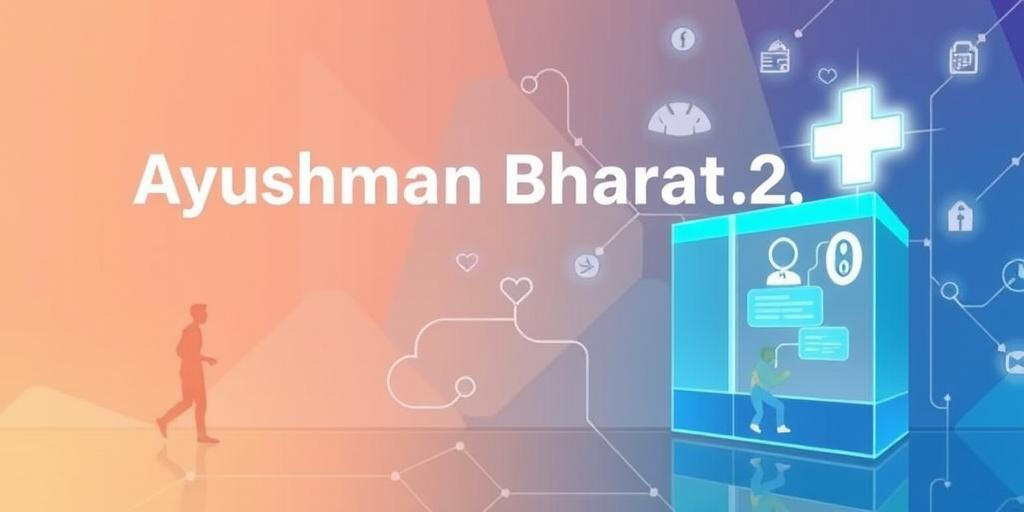Ayushman Bharat 2.0: Expanding Healthcare Access in India (2025)
India’s healthcare landscape is undergoing a significant transformation with the evolution of Ayushman Bharat. As we move into 2025, Ayushman Bharat 2.0 aims to build upon the foundations laid by its predecessor, focusing on expanding healthcare access, enhancing service delivery, and leveraging technology for improved outcomes. This post provides an overview of the key aspects of Ayushman Bharat 2.0 and its anticipated impact on the nation’s healthcare system.
Background: Ayushman Bharat – A Recap
Launched in 2018, Ayushman Bharat comprised two major components:
- Pradhan Mantri Jan Arogya Yojana (PM-JAY): Providing health insurance coverage of up to ₹5 lakh per family per year for secondary and tertiary care hospitalization to over 10 crore poor and vulnerable families.
- Health and Wellness Centres (HWCs): Establishing a network of primary healthcare centers to provide comprehensive primary healthcare services closer to the community.
Ayushman Bharat 2.0: What’s New?
Building on the success and lessons learned from the initial phase, Ayushman Bharat 2.0 is set to introduce several enhancements:
- Expanded Coverage: Aiming to broaden the beneficiary base to include more families and previously uncovered population segments.
- Enhanced Service Package: Expanding the range of services offered under PM-JAY to include outpatient care, diagnostics, and post-hospitalization care.
- Digital Health Integration: Fully integrating the Ayushman Bharat Digital Mission (ABDM) to create a seamless digital health ecosystem, enabling efficient data exchange, telemedicine, and improved patient management.
- Focus on Quality: Strengthening quality assurance mechanisms to ensure accredited healthcare providers adhere to standardized protocols and deliver high-quality care.
- Public-Private Partnerships: Encouraging greater collaboration with private sector players to augment infrastructure, expertise, and resources.
Key Focus Areas for 2025
In 2025, Ayushman Bharat 2.0 will prioritize the following areas:
- Strengthening Primary Healthcare: Expanding the network of HWCs, equipping them with necessary infrastructure, and training healthcare workers to deliver comprehensive primary care services.
- Improving Healthcare Infrastructure: Upgrading existing healthcare facilities and establishing new ones in underserved areas to reduce disparities in access.
- Leveraging Technology: Implementing digital health solutions to streamline processes, improve data management, and facilitate remote consultations.
- Enhancing Human Resources: Addressing the shortage of healthcare professionals by increasing the number of medical colleges, nursing schools, and para-medical training institutes.
- Promoting Preventive Healthcare: Launching awareness campaigns and community outreach programs to promote healthy behaviors and prevent diseases.
Expected Impact
Ayushman Bharat 2.0 is poised to have a transformative impact on India’s healthcare landscape:
- Increased Access: Providing affordable and quality healthcare services to a larger segment of the population, particularly the poor and vulnerable.
- Improved Health Outcomes: Reducing the burden of diseases, improving maternal and child health indicators, and increasing life expectancy.
- Reduced Out-of-Pocket Expenditure: Lowering the financial burden on families due to healthcare expenses.
- Economic Growth: Boosting productivity and economic growth by improving the health and well-being of the workforce.
- Digital Empowerment: Empowering citizens with access to digital health tools and information, enabling them to make informed decisions about their health.
Challenges and Way Forward
Despite its ambitious goals, Ayushman Bharat 2.0 faces several challenges:
- Funding Constraints: Ensuring adequate and sustained funding to support the expansion and implementation of the program.
- Infrastructure Gaps: Addressing the shortage of healthcare facilities, equipment, and trained personnel in many parts of the country.
- Awareness and Adoption: Raising awareness about the program and encouraging eligible beneficiaries to enroll and utilize the services.
- Data Security and Privacy: Ensuring the security and privacy of patient data in the digital health ecosystem.
- Coordination and Collaboration: Fostering effective coordination and collaboration between various stakeholders, including government agencies, healthcare providers, and private sector partners.
To overcome these challenges, the government needs to:
- Allocate sufficient funds and explore innovative financing mechanisms.
- Invest in infrastructure development and capacity building.
- Conduct extensive awareness campaigns and community outreach programs.
- Implement robust data security and privacy measures.
- Establish effective coordination mechanisms and foster partnerships.
Conclusion
Ayushman Bharat 2.0 represents a significant step towards achieving universal health coverage in India. By expanding coverage, enhancing service delivery, and leveraging technology, the program has the potential to transform the nation’s healthcare system and improve the health and well-being of millions of people. As we move into 2025, it is crucial to address the challenges and ensure effective implementation to realize the full potential of Ayushman Bharat 2.0.
